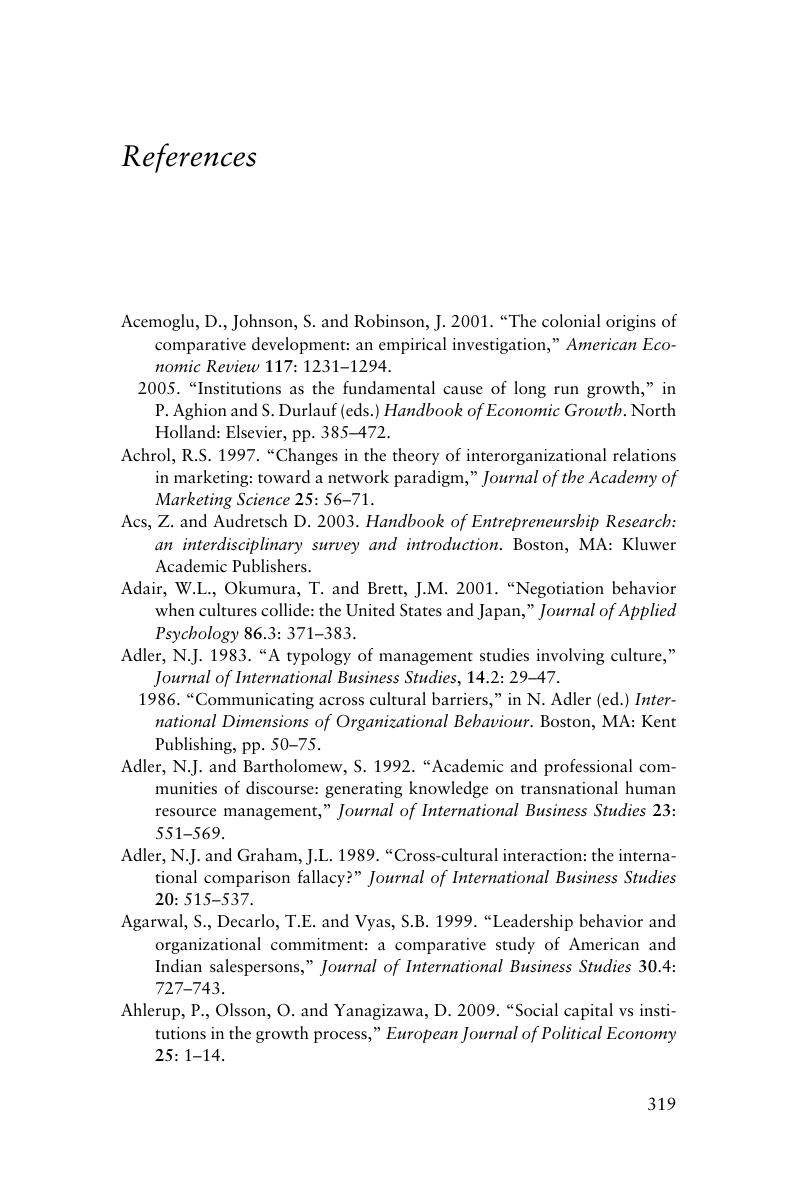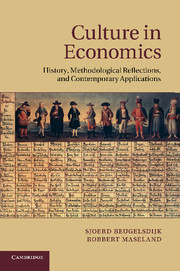References
Published online by Cambridge University Press: 04 February 2011
Summary

- Type
- Chapter
- Information
- Culture in EconomicsHistory, Methodological Reflections and Contemporary Applications, pp. 319 - 370Publisher: Cambridge University PressPrint publication year: 2010



